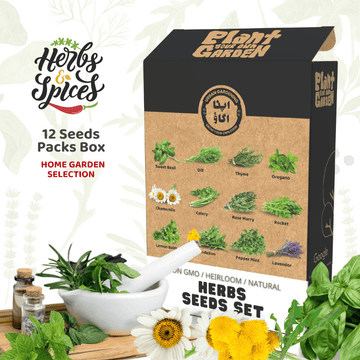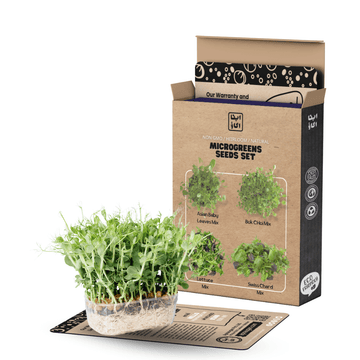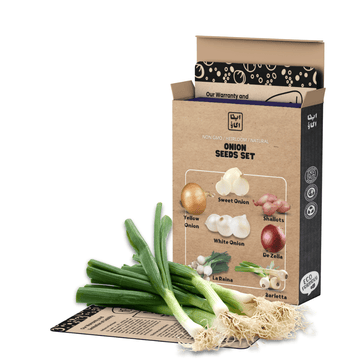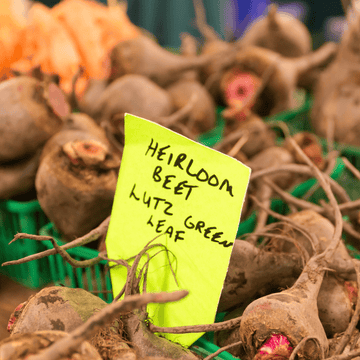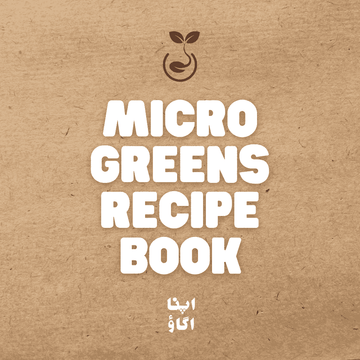Gardening enthusiasts and farmers often face the choice between heirloom and hybrid seeds. Each type has its distinct characteristics, advantages, and challenges. Understanding the differences between heirloom and hybrid seeds is essential for making informed decisions about what to plant in your garden or farm. This article delves into the origins, characteristics, benefits, and drawbacks of heirloom and hybrid seeds, providing a comprehensive comparison to help you choose the best option for your needs.
Table of Contents
1. Introduction to Heirloom and Hybrid Seeds
2. Historical Background
3. Genetic Characteristics
4. Benefits of Heirloom Seeds
5. Benefits of Hybrid Seeds
6. Drawbacks of Heirloom Seeds
7. Drawbacks of Hybrid Seeds
8. Seed Saving and Sustainability
9. Flavor and Nutritional Differences
10. Environmental Impact
11. Conclusion
---
1. Introduction to Heirloom and Hybrid Seeds
Seeds are the foundation of agriculture, and choosing the right type can significantly impact crop yield, quality, and sustainability. Heirloom and hybrid seeds represent two ends of the spectrum, each with unique properties and implications for growers.
**Heirloom seeds** are open-pollinated varieties that have been preserved and passed down through generations. They are valued for their genetic diversity, historical significance, and distinctive flavors.
**Hybrid seeds**, on the other hand, are the result of controlled cross-pollination between two different plant varieties. They are engineered to enhance specific traits such as disease resistance, uniformity, and higher yields.
---
2. Historical Background
**Heirloom Seeds**:
- Heirloom seeds have a rich history, often dating back 50 years or more.
- They have been cultivated and saved by gardeners and farmers, preserving genetic diversity and cultural heritage.
- Historically, these seeds were selected for their adaptability to local conditions and culinary qualities.
**Hybrid Seeds**:
- The development of hybrid seeds began in the early 20th century with advancements in agricultural science.
- The first commercial hybrid seed, a corn variety, was introduced in the 1920s.
- Hybrids gained popularity due to their superior performance and uniformity, which appealed to large-scale commercial farmers.
---
3. Genetic Characteristics
**Heirloom Seeds**:
- Heirloom seeds are open-pollinated, meaning they are pollinated naturally by insects, birds, wind, or human intervention.
- They exhibit genetic diversity, which allows for adaptation to local environments and resistance to various pests and diseases.
- Seeds saved from heirloom plants will produce offspring with similar characteristics, maintaining genetic consistency over generations.
Hybrid Seeds**:
- Hybrid seeds are created through deliberate cross-pollination of two parent plants with desirable traits.
- The first generation (F1) hybrids often exhibit "hybrid vigor" or heterosis, resulting in improved growth, yield, and resistance to stress.
- Seeds saved from hybrid plants typically do not produce true-to-type offspring, leading to unpredictable results in subsequent generations.
---
4. Benefits of Heirloom Seeds
- **Genetic Diversity**: Heirloom seeds contribute to genetic diversity, which is crucial for the resilience and adaptability of crops.
- **Flavor and Nutrition**: Many heirloom varieties are prized for their superior flavor and nutritional content compared to modern hybrids.
- **Cultural and Historical Value**: Growing heirloom seeds helps preserve agricultural heritage and traditions.
- **Seed Saving**: Gardeners can save seeds from heirloom plants, promoting sustainability and self-reliance.
---
5. Benefits of Hybrid Seeds
- **Higher Yields**: Hybrids are often bred for higher productivity, which can be crucial for meeting food demands.
- **Disease and Pest Resistance**: Many hybrids are engineered to resist specific diseases and pests, reducing the need for chemical interventions.
- **Uniformity**: Hybrid plants tend to grow uniformly, making them easier to harvest and market.
- **Specific Traits**: Hybrids can be tailored for particular growing conditions, such as drought tolerance or faster maturation.
---
6. Drawbacks of Heirloom Seeds
- **Lower Yields**: Heirloom varieties may not produce as high yields as hybrids, which can be a disadvantage for commercial farming.
- **Susceptibility to Disease**: Without modern breeding techniques, some heirloom plants may be more vulnerable to certain diseases and pests.
- **Consistency**: Variability in heirloom plants can lead to inconsistencies in size, shape, and yield.
---
7. Drawbacks of Hybrid Seeds
- **Seed Saving Issues**: Seeds from hybrid plants do not reliably produce true-to-type offspring, making it necessary to purchase new seeds each season.
- **Genetic Uniformity**: The lack of genetic diversity in hybrid crops can make them more susceptible to widespread diseases and environmental changes.
- **Cost**: Hybrid seeds can be more expensive than heirloom seeds due to the research and development involved in creating them.
- **Environmental Concerns**: The reliance on hybrid seeds may contribute to the reduction of biodiversity and the dominance of a few major seed companies.
---
8. Seed Saving and Sustainability
**Heirloom Seeds**:
- Seed saving is a common practice with heirloom seeds, allowing gardeners to become self-sufficient and reduce dependence on commercial seed suppliers.
- Saving seeds from strong and healthy plants helps maintain and even improve crop resilience over time.
- This practice also supports biodiversity by maintaining a wide range of plant varieties.
**Hybrid Seeds**:
- Saving seeds from hybrid plants is generally not recommended due to the genetic variability of subsequent generations.
- Farmers and gardeners must purchase new hybrid seeds each year, which can be costly and unsustainable.
- The dependence on commercial seed suppliers can limit farmers' control over their crops and increase vulnerability to market fluctuations.
---
9. Flavor and Nutritional Differences
**Heirloom Seeds**:
- Heirloom varieties are often selected for their taste, resulting in superior flavors compared to many hybrids.
- These plants can also be more nutritious, with higher levels of vitamins, minerals, and antioxidants.
- The diverse genetic makeup of heirlooms contributes to their unique and rich flavors.
**Hybrid Seeds**:
- While some hybrids are bred for flavor, many are developed with a focus on yield, appearance, and shelf life.
- This can sometimes result in less flavorful produce compared to heirloom counterparts.
- Nutritional content in hybrids can vary, and while some hybrids are enhanced for specific nutrients, they may not match the overall nutritional profile of heirlooms.
---
10. Environmental Impact
**Heirloom Seeds**:
- Growing heirloom varieties can support local ecosystems by preserving native plant species and promoting biodiversity.
- Heirloom plants are often more adaptable to local conditions, requiring fewer chemical inputs and water.
- By saving and sharing heirloom seeds, gardeners and farmers contribute to agricultural sustainability and resilience.
**Hybrid Seeds**:
- The development and use of hybrid seeds can lead to monoculture farming, which reduces biodiversity and increases vulnerability to pests and diseases.
- Hybrids often require specific inputs such as fertilizers and pesticides, which can have negative environmental impacts.
- However, hybrids bred for disease resistance can reduce the need for chemical treatments, potentially benefiting the environment.
---
11. Conclusion
Choosing between heirloom and hybrid seeds involves considering various factors including yield, flavor, disease resistance, and sustainability. Heirloom seeds offer genetic diversity, rich flavors, and the ability to save seeds, making them ideal for home gardeners and those interested in preserving agricultural heritage. Hybrid seeds provide higher yields, uniformity, and specific desirable traits, making them suitable for large-scale commercial farming.
Ultimately, the decision depends on your gardening goals, values, and environmental considerations. Both heirloom and hybrid seeds have their place in agriculture, and understanding their differences can help you make informed choices that align with your needs and principles.
---
This comprehensive exploration of heirloom and hybrid seeds aims to provide a balanced view, highlighting the unique advantages and challenges of each. Whether you are a home gardener, a small-scale farmer, or involved in large-scale agriculture, this knowledge can guide you towards making the best decisions for your specific circumstances.
Grow with Apnaugao


